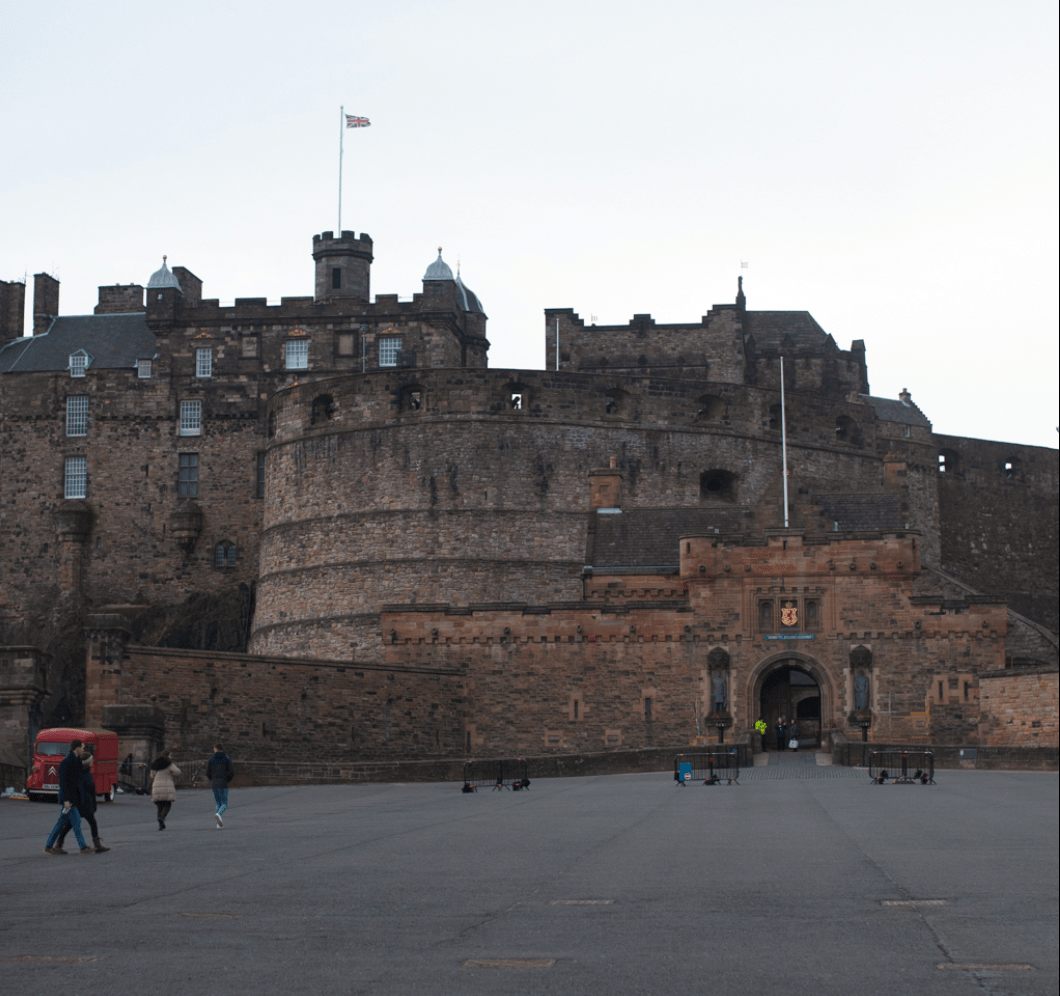Edinburgh History Tours: Royal Buildings
11th Oct 2022
On our Edinburgh history tours, we visit several of the city's iconic buildings with ties and links to both Scotland's past and current royals. Would you like to learn more about their history? Here are some of the establishments with royal ties you should see when visiting Edinburgh.
1. Edinburgh Castle
A visit to Edinburgh isn't complete without a visit to Edinburgh Castle which is over 900 years old!
Accross the last nine centures, Edinburgh Castle has seen many royal events. It was frequented by Mary Queen of Scots and was the birthplace of her son James VI and I who held many banquets there and whose succession was a key step in the formation of the United Kingdom. Queen Margaret and Mary of Guise both also spent the final weeks of their lives there. The castle is also one of the most beseiged in Europe, in one instance being captured in just 30 minutes and the volcanic plug it sits on, referred to as Castle Rock, has also been inhabited since the iron ages!
Hence, it has plenty of tales to tell which you can learn all about on our Secrets of Edinburgh's Royal Mile tour with our accredited Storytellers.
2. The Palace of Holyroodhouse
Located at the opposite end of the Royal Mile from the Castle, you'll find The Palace of Holyroodhouse and its ruined chapel opposite the Scottish Parliament. The chapel is actually older than the Palace itself at close to 900 years old and was founded by King David I.
Holyrood Palace has been home to Royals for around five centuries and was even the official residence of Queen Elizabeth II in Scotland, up until her passing in September 2022. It's another royal building with strong ties to Mary Queen of Scots who also lived there and married two out of her three husbands at the royal residence. In fact, you can still visit her bedroom at the palace, preserved just as it had once been. The fountain at the front of the palac contains carvings of various symbols related to the Scottish Royal famil. It was added by Queen Victoria in the 19th-century as part of improvements to the Palace grounds and is a replica of another 16th-century fountain at Linlithgow Palace.
Visit for yourself and learn more on our Treasures of The Old Town tour.
3. The Canongate Kirkyard
The Canongate Kirkyard, located on the Royal Mile, also has ties to royalty. If you happen to pass by during Spring you'll witness the front of the canongate lined with bright pink cherry blossoms. One blossom tree was planted by King Philip upon his first visit to the Kirkyard in 1953, and another by Queen Elizabeth upon her first visit to Edinburgh in 1952. The Kirk has been visited by the British Royal Family numerous times over the years and was the Queen's church during her visits to Scotland. The golden antlers located above the churches doorway were presented by Queen Elizabeth II's father, King George VI, in 1946.
Among the graves located in the Kirkyard you can also find the disputed final resting place of David Rizzio, a murdered secretary of Mary Queen of Scots.
Learn more about this location on our Treasures of The Old Town tour.
4. St. Giles' Cathedral
St. Giles' Cathedral is another of the Royal Mile's oldest buildings, also nearing 900 years old. It's where Queen Elizabeth II first laid at rest after her passing in Scotland. A tradition known as the Vigil of The Princes took place here, whereby King Charles III and other members of the Royal family stood guard. The tradition was developed 86 years before in 1936, after the death of George V.
Historically, only males took part in the Vigil of the Princes, but in 2022, Queen Elizabeth's daughter Princess Anne made history by being the first woman to be involved in the tradition. We share more of the cathedral's story on our Secrets of Edinburgh's Royal Mile tour.
5. The Mercat Cross
The Mercat Cross is where we start all of our tours - so if you join us on a tour, you'll be sure to see it! It's been the site of proclamations for several centuries and is notably topped with a unicorn, the national animal of Scotland. Historically, proclamations used word of mouth to spread important news, particularly when it came to things such as royal births and asscensions. In the past it would take a messenger three days to travel from London to Edinburgh by horse to share the news.
This tradition is still upheld today - with a three day delay between proclamations in London and at the Mercat Cross in Edinburgh. The latest proclamation to take place (at the time of writing this blog) was the Proclamation of Accession for King Charles III, announced by Lord Lyon, King of Arms.
Visit these sites and uncover more of Scotland's stories on our five-star Edinburgh history tours with an accredited Storyteller, book your history tour here. For more blogs like this one, directly to your inbox, sign up to our fortnightly newsletter.

